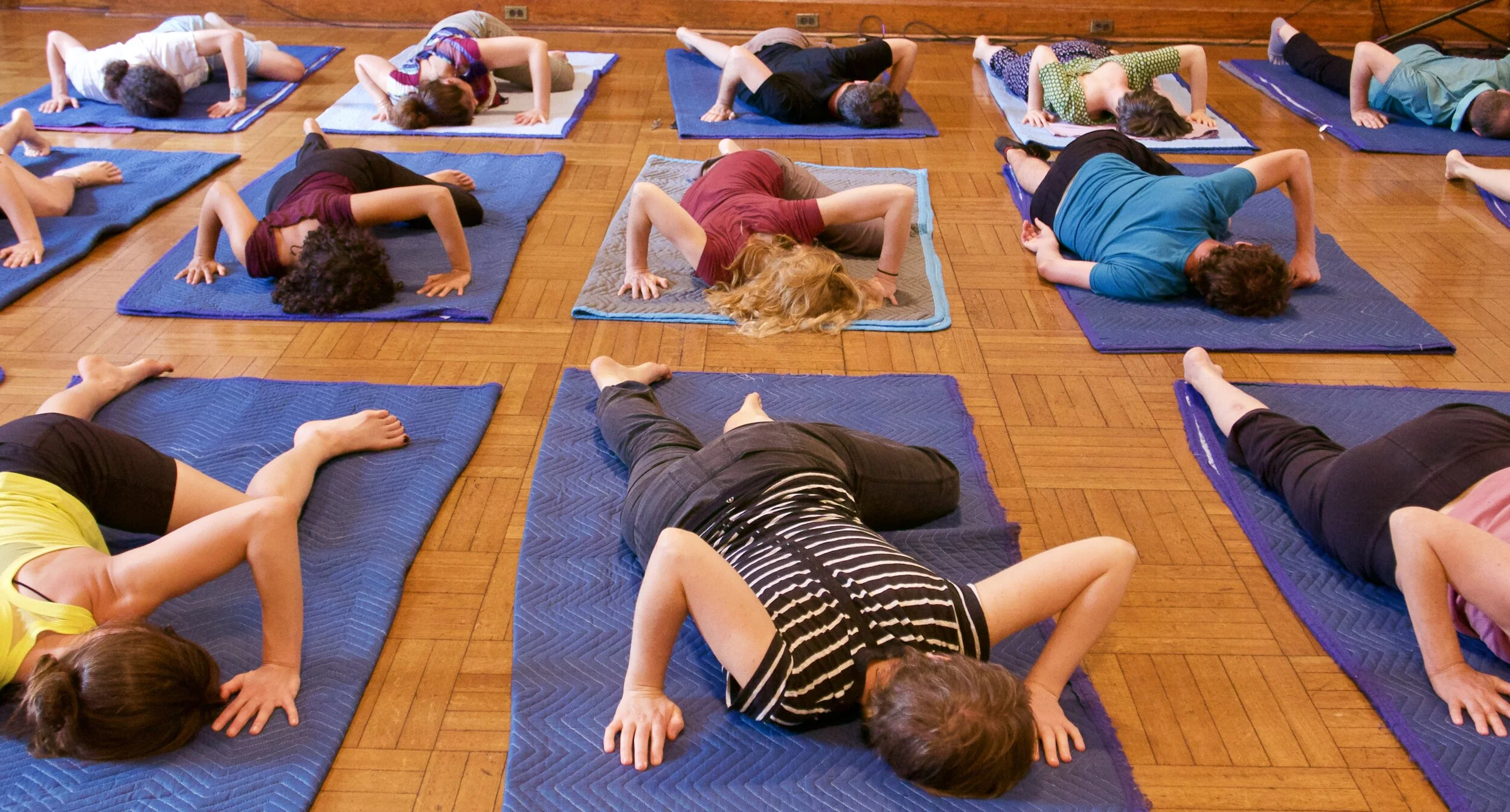Guide to Practicing Awareness Through Movement®
Before class:
Check with your doctor if you have any concerns about your participation. Beginning with individual Functional Integration lessons is an alternate entry point into the Feldenkrais Method.
Clear a space on the floor where you have enough room to lie down and spread out. Move anything out of the way that you’d potentially knock into. Have a carpet, rug, blanket, or mat your can lie on comfortably. A yoga mat is often too sticky for ATM lessons, but if you put a towel over it that may work.
Let the people you live with (including pets!) know that you’re practicing Feldenkrais and need to an hour of undisturbed time.
Put your phone on silent, or do not disturb.
Take off anything that restricts your movement (belts, shoes, glasses, hair ties, etc.) Remove anything from your pockets.
Dress warmly. Much of the movement we’ll be practicing is slow and small.
Have some folded bath towels nearby. Some people find they want some support for underneath their head while lying in different positions. Less is more, when it comes to head support. But if you feel discomfort in your neck or if your chin is far away from your chest while lying on the back, a folded towel is a great option for bringing the floor to you. Pillows are often too soft or bulky. Support behind your neck is not recommended, as it dampens the possibility of your head and neck to move freely.
During class:
Above all else, your safety and comfort are the priority. Do not do any movements that cause you pain or even the slightest discomfort. Do less. Make the movement smaller, adapt the position to suit you, rest for a longer period between movements, or do the movement in your imagination. Doing the movement in your imagination will offer deep neurological benefits. The creativity which you bring to the lesson is a valuable part of your learning. If you need help modifying a movement, please ask.
Approach the lesson well within an easy, comfortable, and gentle range and intensity for you. Relax, breathe, proceed slowly. When moving within this easy range, the nervous system communicates to the muscles to reduce muscular tension and unnecessary contraction. Reducing your effort will increase your sensitivity and ability to notice yourself and notice differences. Move slowly so you that you can expand your awareness, notice more, and make more refined distinctions. For learning, less strain means more gain.
Bring yourself into a curious mindset, and withhold self-judgement. Classes are completely non-competitive. There is nothing for you to fix or change. This is the paradox of transformation.
If you get lost or miss a direction, wait a bit and see if you catch on. If it’s a recorded class, you can rewind if you like. If it’s a live class, you can ask me to repeat something if you want. It’s recommended to not check out what other people in the class are doing, which would take you out of your internal experience of the lesson.
It’s not important that you achieve the movements during your first time doing a lesson. Because we audio record all the lessons, you can come back tomorrow, next week, or next year for another approximation. When working from an audio recording, you can pause the recording at any point and spend more time on certain movements if you like.
It’s okay if you fall asleep during the lesson! This is another reason why all the lessons are recorded. No judgement - you probably needed the sleep and we hope it was a delicious nap.
Rests and pauses throughout the lesson are an important part of ATM. They are a time for integration and observation. Your brain and nervous system will continue to process what just happened. You can rest whenever you want. You do not have to wait for the invitation to rest.
After:
Take time to sense and feel your self in standing and walking. As you transition back into your every day life, continue to use the heightened awareness and sensitivity from the lesson to inform you. As a student of the Feldenkrais Method you are in a self-learning process. Every lesson is an opportunity for you to notice your habits. There are infinite number of things you can feel or experience. You may experience discoveries or revelations as the principles of the method carry over into your every day life. You may also experience an amnesia of previous difficulties as they dissolve or fade away.
The process of unraveling body patterns that you've created over your whole life takes time. Learning, healing, and change takes time. Enjoy the process.
This guide was inspired by the work of Sarah Baumert, Michelle Huber, and Deborah Bowes.

